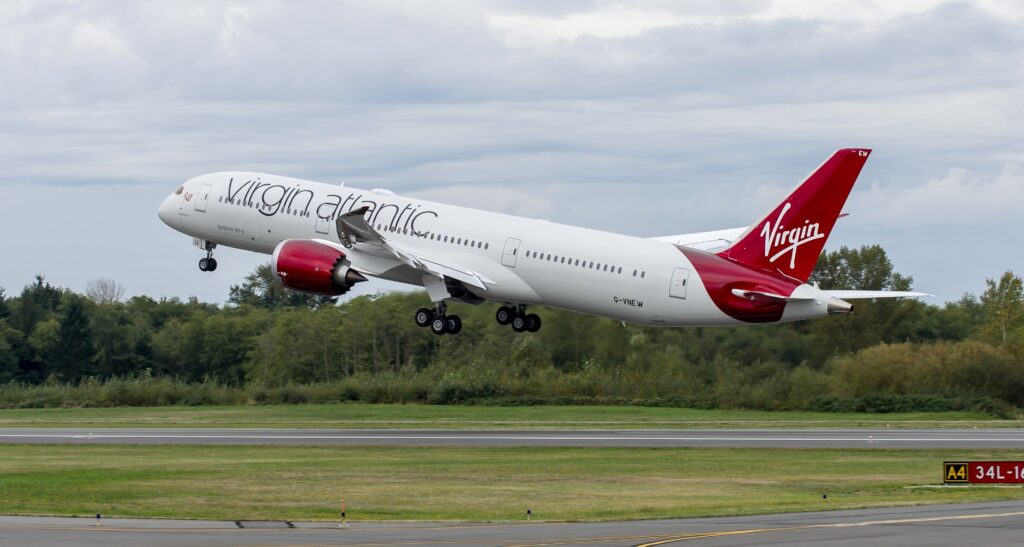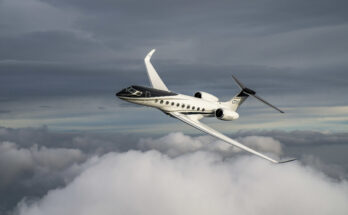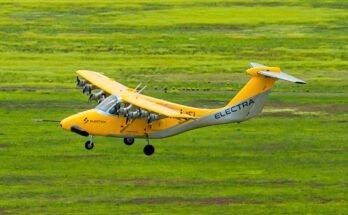
The aviation industry is a significant contributor to greenhouse gas emissions, accounting for around 2.5% of global emissions. As concerns about climate change intensify, airlines are under increasing pressure to reduce their environmental impact, particularly in the European market.
Sustainable aviation fuel (SAF) has emerged as one promising solution to reduce the airline industry’s carbon footprint, offering the potential to significantly lower emissions from air travel.
Virgin Atlantic got a lot of attention earlier in the week when it flew one of its Boeing 787-9 widebodies from London to New York’s JFK airport using 100% SAF in both of the aircraft’s engines. The flight was not unusual – aircraft OEMs, engine manufacturers, and airlines have been making test flights using SAF for years. But it did demonstrate a long-range transatlantic flight that mirrored a common airline route for passenger travel, and it relied on SAF to power both engines rather than using the fuel in only one engine.
In recent months, there have been several notable milestones in the development and adoption of SAF. Emirates airlines successfully flew an A380 with one of its GP7200 engines using 100% SAF on November 22, following a similar test flight with a Boeing 777-300ER last January. Similarly, a Gulfstream G600 business jet powered by PW815GA engines completed a transatlantic flight from Savannah, Georgia to Farnborough, UK, using 100% SAF on November 19. These flights, along with many others that have been made over the past decade, have demonstrated the technical feasibility of using SAF as a “drop-in” replacement for petroleum-based Jet-A in commercial aviation.
However, widespread adoption of SAF faces several challenges. Currently, SAF is approved for blending with conventional jet fuel at a maximum of 50%. This limitation stems from the need for aromatic compounds, which are present in Jet-A, to expand engine seals for a tighter fit (Virgin Atlantic’s flight from London to New York used a blend of 88% HEFA-processed fuel and 12% synthetic aromatic kerosene).
While recent test flights have shown that 100% SAF can be used in certain engines, more testing and certification will be required before it can be widely adopted in commercial operations. But even if limited to a 50% blend at this moment, SAF could reduce net global emissions by the aircraft. However, scaling up SAF production to meet the demands of the global airline industry poses a major challenge. At the moment, SAF accounts for a negligible amount of global jet fuel used for flights. The Biden Administration’s Inflation Reduction Act aims to boost SAF production to 3 billion gallons annually by 2030, but this falls far short of the industry’s estimated fuel consumption of 325 billion gallons in 2023.
Apart from production limitations, there are concerns about the potential economic and social impacts of SAF. The use of “energy” crops such as corn for SAF production could compete with food production and strain water resources. Additionally, the energy-intensive nature of agriculture itself contributes to greenhouse gas emissions. Waste oils, another potential source of SAF, are unlikely to be scalable enough to meet the industry’s fuel needs.
Governments, airlines, and fuel producers are collaborating to accelerate the development and adoption of SAF, assuming that it can reduce lifecycle emissions while maintaining air travel connectivity and allowing air travel to continue to grow. SAF may play an increasingly important role in decarbonizing the aviation sector, or it may turn out to one of those promising ideas that turn out to be impractical in the real world.
In the meantime, Boeing and Airbus are also pursuing technological advancements to improve the fuel efficiency of their aircraft. Governments around the world are also looking at less industry-friendly ways to reduce the air transport industry’s carbon footprint – in some cases by imposing carbon taxes on passengers to reduce demand for air travel, and in others by replacing regional flights with rail links where possible.
A lifelong aviation enthusiast, Douglas Royce is currently co-editor of four of Forecast International's Market Intelligence Services: Civil Aircraft Forecast, Military Aircraft Forecast, Rotorcraft Forecast, and Aviation Gas Turbine Forecast. As such, he plays a key role in many important projects that involve market sizing and forecasting for various segments of the world aerospace industry, as well as demand for related systems.




